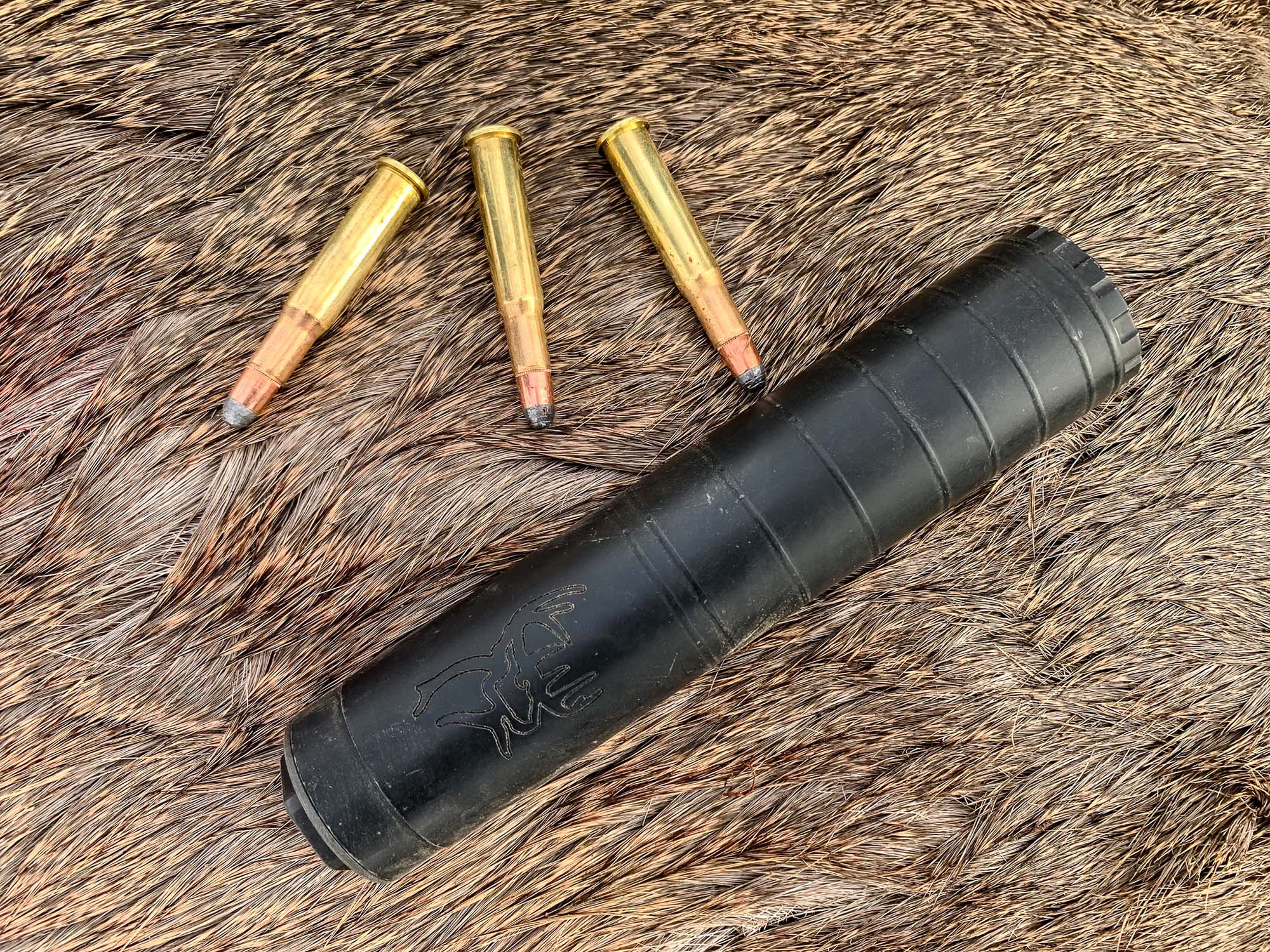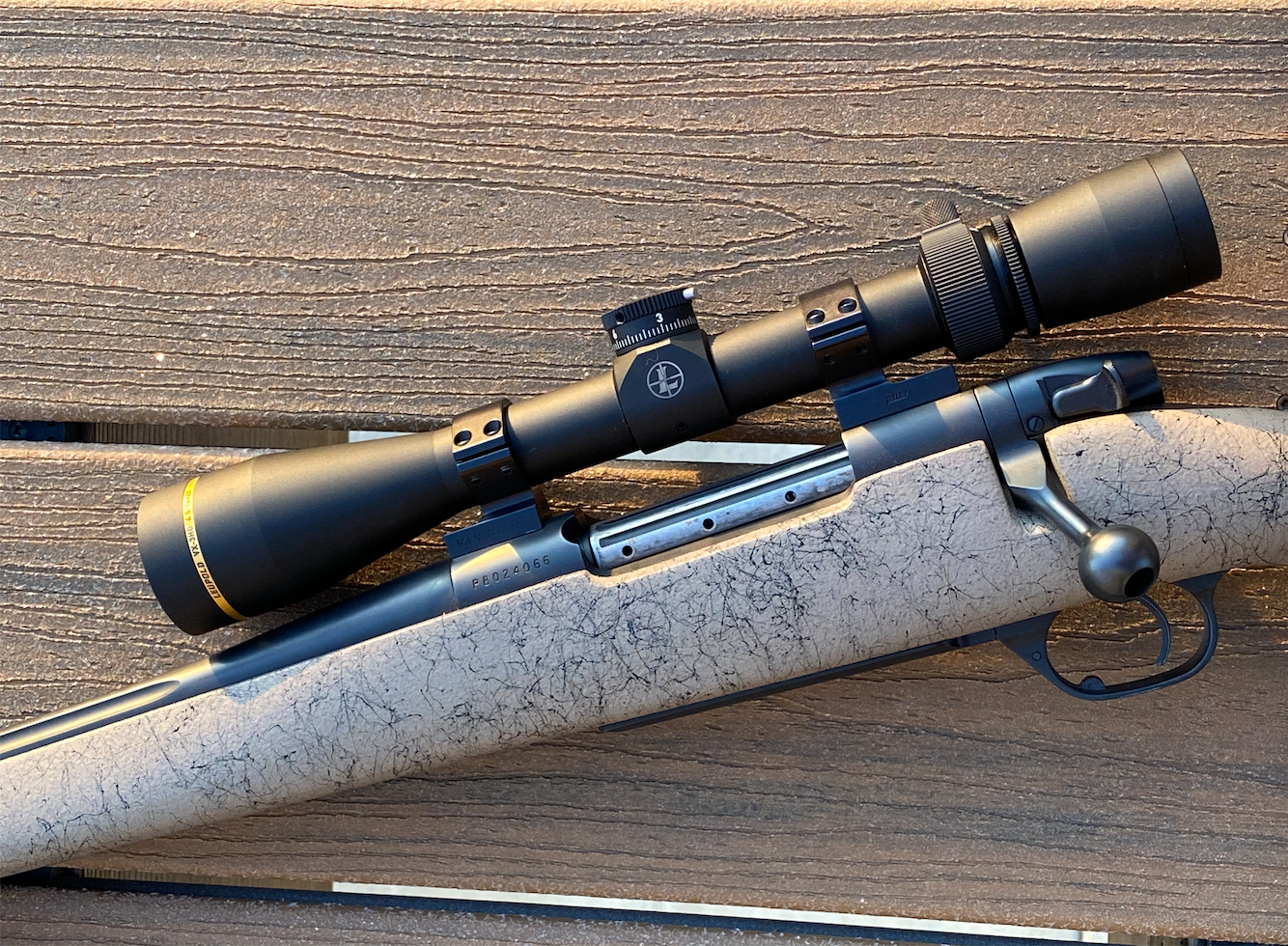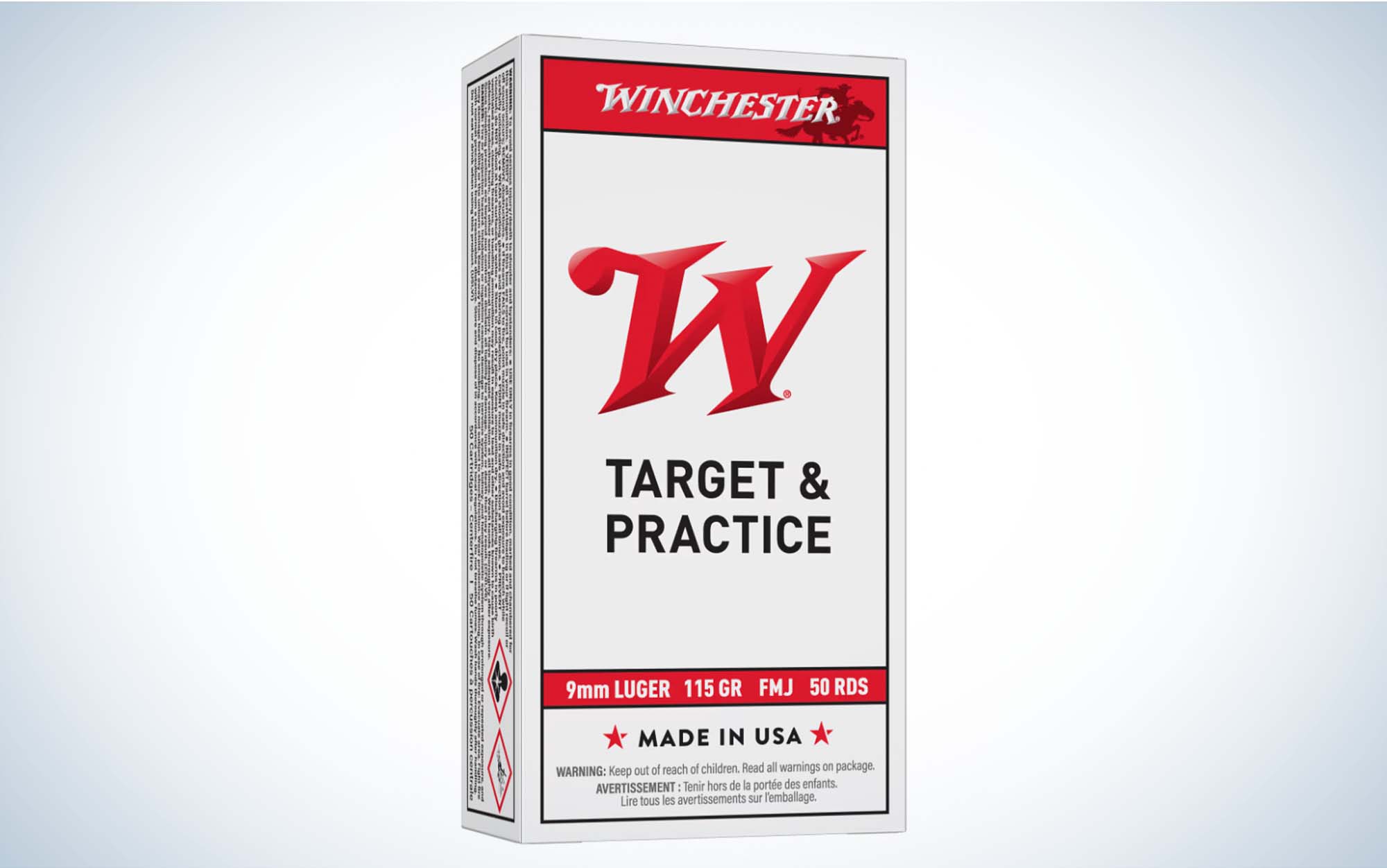How to Buy a Suppressor

Like many hunters, I put off my first suppressor application for years. It wasn’t that I didn’t understand their benefits: suppressors reduce noise and recoil, plain and simple. Mostly, I didn’t want the hassle. Navigating how to buy a suppressor sounded like an expensive nightmare of onerous paperwork and interminable waiting periods. It’s true that buying one can still be expensive, but the process is faster and simpler than it’s ever been. So if you’ve ever considered buying a can, now is the time. Here’s how to buy a suppressor legally in the U.S.
Table of Contents
You can read through the whole article or click on a topic below to jump right to it.
How Long Will a Suppressor Application Take?
There are several stages in the suppressor-buying process, but the one that has historically taken the longest (and what you’ve probably heard your buddies grumbling about) is the time it takes the ATF to process your application, which includes sending your background check over to the FBI. As recently as last winter, ATF approval times were taking, on average, eight to 10 months — which didn’t include additional turnaround time for shipping, local law enforcement notification, and so on.
Related: The ATF Cut Suppressor Wait Times from 10 Months to 1 Day. Here’s Why You Can Get a Suppressor Faster
Today, suppressor wait times are shorter than ever. That’s because the ATF streamlined the approval process in early 2024, effectively reducing suppressor wait times for eligible applicants from the better part of a year to as little as one day in some cases. (To be clear, the same legal requirements to obtain a suppressor remain in place; it’s just taking the ATF less time to process those applications.)
At press time, Silencer Central reported an average approval wait period of about seven days for individual applicants. Silencer Shop noted that its median wait period for the same type of applicant is one day. (More on individual vs. trust applications in a minute.) You can check ATF’s processing times here, but the federal agency seems to actually overestimate its processing times for most applicants. Real-time approval has been much quicker for applicants with straightforward background checks.
Where to Buy a Suppressor
While you can legally buy a suppressor from an individual or acquire one through a trust or corporation, we’re going to cover how to buy one through a dealer in this article. By now, several reputable companies have made it their business to help hunters and shooters like you understand how to buy a suppressor.
Silencer Central
If you want someone to hold your hand throughout the entire suppressor-buying process, look no further. Founded in South Dakota in 2005, Silencer Central is the original suppressor dealer who cracked the code on interpreting and complying with ATF regulations to ship suppressors to your home. It’s a genuine one-stop shop: Start by buying your suppressor through Silencer Central and, when you’re approved, the can will ship to your doorstep.
Silencer Central’s application process is foolproof, in part because you can always check your application status in detail. It also doesn’t hurt that their customer service reps — actual humans who live and work in South Dakota — are infinitely patient, no matter how idiotic your questions. Unlike other dealers, the company will even set up a free NFA trust for you (more on trusts below).
Silencer Central sells its own private-label Banish cans, as well as suppressors from other popular manufacturers like SilencerCo, DeadAir, and a dozen more. You can find an overview of Silencer Central’s process for how to buy a suppressor here.
Silencer Shop
Silencer Shop is another popular company that helps streamline the ATF application process. Buy a suppressor through Silencer Shop, fill out some forms, find a local dealer near you, and you’re in business. The company has distributed about 500 application kiosks around the country. Find a local dealer who has one, and they’ll help you scan your fingerprints on it, and make the other tasks in the purchase process easier.
The experience is handy, but it’s also not without its quirks. The kiosk I used to capture my fingerprints and fill out my Silencer Shop application had to be rebooted while I used it, and the SS app isn’t exactly clear on where your application is in the ether. Make sure you select a well-rated and reputable local suppressor dealer, since they’ll be your main point of contact for questions on your application. Here’s an explanation of Silencer Shop’s process.
A Note on FFLS vs SOTs
Your favorite gun shop may be able to field all your usual gun and ammo needs, but that doesn’t necessarily mean you can buy a suppressor through them. To legally deal in suppressors, an FFL must pay an SOT, or Special (Occupational) Tax.
“There’s about 75,000 FFLs in America, what I’ll call the real, type-one gun dealers,” Maddox said in June, speaking in rough estimates. “We know that there’s about 18,000 to 20,000 FFLs with SOTs.”
In other words, if you want to buy your suppressor through a local gun shop, you’ll have to find one with an SOT. Silencer Shop lets you search for local suppressor dealers here.
Legal Requirements for Buying a Suppressor
The restrictions for lawfully buying a suppressor are similar to those for purchasing a firearm, with some additional restrictions. (Suppressors are regulated under the National Firearms Act of 1934, unlike most firearms.) According to the American Suppressor Association, to legally buy a suppressor, you must be:
- A U.S. resident
- A resident of one of the 42 states that allow civilians to own suppressors (see below)
- Legally eligible to purchase a firearm
- Able to pass a background check (these take anywhere from several days to weeks or months since they’re routed through the ATF)
- At least 21 years old to buy a suppressor from a dealer
- At least 18 years old in certain states to purchase a suppressor from an individual (via Form 4) or possess a suppressor (via a trust or corporation)
- Able to pay a $200 transfer tax
States Where Suppressors Are Legal and Illegal
To lawfully purchase a suppressor, you must reside in a state where they’re legal. The good news is, that’s most of them: Currently, 42 states allow civilians to own suppressors. With the exception of Connecticut, all those states also allow suppressors for hunting.
The states that outlaw suppressors are the ones you’d expect, since they already have more restrictive gun laws than the rest of the country. At press time, eight states currently outlaw suppressors, as well as the capital:
- California
- Delaware
- Illinois
- Hawaii
- Massachusetts
- New Jersey
- New York
- Rhode Island
- Washington D.C.
Silencer Central maintains an updated map of which states allow suppressors here; click on your state to review your state’s status and additional details.
How to Choose a Suppressor
Like any piece of gear, each type of suppressor has benefits and drawbacks. If you opt for a shorter and lighter suppressor, for instance, you’ll sacrifice some noise and recoil reduction for weight savings and handiness.
These are the key questions Silencer Central founder and CEO Brandon Maddox has always asked new customers who aren’t sure what suppressor model to buy.
What are you going to use it for?
The best place to start is to consider your applications for a suppressor. The can you want for plinking away on your backyard range probably isn’t the same one you’d use on backcountry elk hunt — although it could be.
“If you want to hunt with your suppressor, we typically steer you toward a titanium suppressor that’s shorter, because you’re going to like that experience more. It doesn’t add so much weight to the end of the barrel,” says Maddox. “If you want to use it for target hunting and shooting, we’d recommend something else. If you want something just for an AR, it’d be a different one.”
What caliber is your gun?
“People think a suppressor is specific to their firearm model. Customers always want to tell you exactly what gun they have,” says Maddox, who got his start by visiting gun shows and talking to suppressor customers first-hand. “I finally learned to cut to the chase and ask what caliber it is, because that’s all that really matters.”
A lot of customers aren’t familiar with the concept of multi-caliber suppressors, says Maddox. While you can buy a suppressor that’s specific to different rifles, buying just one for several guns is common.
“One apprehension of new customers is they think, ‘Wow I’m afraid I’ll like it, then I have to get one for every gun in the safe, that’s going to get expensive,’” says Maddox. That’s not the case. “They often want to know which suppressor to get [for their rifle], and I always say, ‘Well, how many long guns do you have? Do you have an .308? A .270? A .223, a 6.5?’ After you hear everything they own, in most cases, those customers could all just get one .30-cal. suppressor for all of those rifles.”
Barrel-to-Can Compatibility
While your rifle may safely shoot many different cans, you still have to mount the suppressor to your muzzle somehow. That means you may have to purchase a thread adaptor or even thread the barrel of your gun to ensure they’re compatible. (If it isn’t threaded already, make sure you see a full-time gunsmith to get your barrel threaded or send it in to Silencer Central.)
Stainless Steel vs. Titanium vs. Aluminum vs. Inconel Suppressors
Suppressors are constructed with a handful of materials, namely aluminum, stainless steel, and titanium, or a combination of steel and titanium.
- The cheapest suppressors are made with aluminum. They’re lightweight but prone to wear and tear like pitting. Aluminum is sometimes combined with other materials, like titanium, to make lighter cans.
- Stainless steel cans usually hit the middle price point, and often incorporate titanium, too. They’re generally durable and capable of handling full-auto fire; they’re also the heaviest.
- Inconel is also in the middle to upper price point, and is a heavier nickel-chromium alloy that’s often common in cans approved for full-auto.
- The priciest suppressors are usually made exclusively from titanium, which offers a combination of durability and weight savings.
Modular Suppressors
Some suppressors are modular, allowing you to tweak the can’s length and weight (and correspondingly its noise and recoil reduction) by adding or removing a section. The Banish 30, for instance, is 9 inches long at its most suppressed, but the last two inches of the can can be unscrewed and left off to save weight or reduce the overall length of your rig for tighter quarters, like a deer blind.
Sealed vs. Unsealed Suppressors
Another key difference between suppressor models is whether they’re sealed. Sealed suppressors are just that: one integrated unit that customers can’t take apart — and therefore clean or service — themselves. There are fewer moving parts to damage or lose with a sealed can, but you’ll have to send it back for servicing in the event you ever need to clean it. Manufacturers like SilencerCo advise against shooting lead projectiles through their sealed cans to avoid building up excess lead debris.
Read Next: Silencerco Omega 36M: The Ultimate Do-All Suppressor?
If you’re shooting an unsealed can, however, you can take apart your own suppressor to check wear and accumulated fouling. If you plan to purchase a suppressor for rimfire shooting, opt for an unsealed suppressor; Silencer Central recommends cleaning rimfire cans every 350 to 500 rounds.
Step-by-Step Guide to How to Buy Suppressor
If you’re not sure how to buy a suppressor, your best bet is to purchase one through a dealer who is used to helping customers navigate the ATF application process. The exact process (like how your fingerprints are collected and submitted) will differ slightly depending on which company you buy through, but the overall process for buying a suppressor is regulated by federal law, and looks the same.
Here’s an overview of the basic steps for how to buy a suppressor:
- Choose and purchase a suppressor via a dealer like Silencer Central, Silencer Shop, and more. The serial number of that suppressor will be included on all your paperwork, and will include the cost of the $200 transfer tax.
- Create a customer profile with your dealer.
- Submit your fingerprints and a photo ID, either electronically (like a Silencer Shop kiosk) or by receiving and returning fingerprint cards in the mail (Silencer Central)
- Decide if you are applying as an individual or with an NFA trust (see below for the pros and cons).
- Create an ATF eForms account. (Do not lose your password.)
- Digitally complete a Form 4, usually with your dealer. You can fill out Form 4 on paper, but no one recommends this option; processing times are much faster for digital applications.
- Submit your Form 4 via ATF eForms.
- Wait for approval. Approval times can range from one day to months, depending on whether you applied as an individual or a trust, or if you have a background check that’s not straightforward.
- Once you receive ATF approval, fill out Form 4473. This will look familiar since it’s the same form you fill out whenever you buy a gun.
- Your dealer notifies your local Chief Law Enforcement Officer, or CLEO, of your upcoming suppressor transfer. The CLEO is “the local chief of police, county sheriff, head of the state police, state or local district attorney or prosecutor” in your area, according to the ATF. This is simply a notification period — the CLEO does not have to sign any paperwork to approve your application.
- Seven days after your CLEO has been notified, you can pick up your suppressor from a local dealer or, in Silencer Central’s case, your suppressor will be shipped to its location in your state, which in turn will ship it to your door.
Read more about Silencer Central’s process for how to buy a suppressor here. Read more about Silencer Shop’s process for how to buy a suppressor here.
$200 Transfer Tax for Suppressors, Explained
Suppressors aren’t exactly cheap, especially when you factor in the mandatory $200 transfer tax that must be paid each time you purchase or transfer a can. The good news is, that fee hasn’t changed in the nine decades since it was imposed.
The tax originates with the 1934 National Firearms Act, which was enacted with an “underlying purpose was to curtail, if not prohibit, transactions in NFA firearms” following gang violence, according to the ATF. (These were defined as “shotguns and rifles having barrels less than 18 inches in length, certain firearms described as ‘any other weapons,’ machine guns, and firearm mufflers and silencers.”) In 1934, Congress considered a $200 tax (the equivalent of about $4,700 in 2024) to have been cost-prohibitive for most prospective purchasers.
Filing as an Individual vs. an NFA Trust
When you file your Form 4, you will have the option to file as an individual or as a trust. Currently, the biggest advantage to filing as an individual is that it’s simpler (depending which dealer you go through) and currently enjoys faster ATF approval times. If your priority is flexibility and you’re not in a time crunch, you should apply using an NFA trust.
Individual Pros
- Faster ATF approval times than an NFA trust
- Less expensive (depending on your dealer) and less paperwork upfront
Individual Cons
- Less flexibility
- No one is legally allowed to use your suppressor except with your direct supervision
- Estate planning is a pain; suppressors often end up in probate and cause massive headaches for your heirs
- If you decide to transfer a suppressor to a trust in the future, you must pay the $200 transfer tax again
NFA Trust Pros
- More flexibility
- You can add eligible individuals to your trust, who can use your suppressors without your supervision
- Smarter estate planning
NFA Trust Cons
- Slower ATF approval times than individual applications
- Can be an extra expense (depending on your dealer)
Once you set up a trust, it can be used if (or more realistically, when) you buy additional suppressors. While NFA trust applications do take longer for ATF approval, those turnaround times are still significantly shorter than historical applications. For instance, while Silencer Central is reporting an average approval time of 150 days for eForm 4 trust applications, my own application this summer was approved by the ATF in 53 days.
Silencer Central doesn’t charge to set up an NFA trust. Instead, they throw that in for free when you buy a suppressor through them and there’s not a noticeable difference in paperwork for customers.
“We still feel like the best way to buy a silencer is through a trust. The major benefits are that is allows you to share the silencer, and it also allows you to pick who gets it when you pass away,” says Maddox of Silencer Central. “And the trust, like it or not, may take a little longer because there’s more paperwork for the ATF to review. Unless you’re super impatient and you need it for a hunt coming up quick, at the end of the day, it’s the better way to go. ”
You can read more about the differences between filing as an individual or with a trust here.
ATF Approvals, and Denials
If you’ve historically passed the background check for purchasing a firearm (Form 4473) without any delay, then your ATF approval should come back relatively quickly. The ATF sends background checks for suppressor applicants through the FBI’s NICS system.
“Seventy one percent of people are approved in ‘real time.’ The flipside of that is, 29 percent of people are waiting longer,” says Maddox of the NICS background check. Applicants in that 29 percent aren’t all denied — they just have to wait longer for federal officials to sort out applicants with more complicated legal backgrounds.
“I have to think the people who are in the 29 percent — who have been arrested or know that there’s a felon in their state with a similar name — probably know it by now. Maybe not. We get denials every day. Not a ton, but if someone got denied, that means they’re not supposed to own a gun. I used to give a refund for a denial, because people didn’t realize it was the same background check as a regular firearm. Now it’s like, ‘Wow, we put a lot of work into that, so you have to pay a restocking fee.’ You should know if you’re prohibited.”
Here’s the full list of reasons someone would be prohibited from purchasing a suppressor.
Tips for New Suppressor Owners
Keep Good Records
When you receive your suppressor, resist the urge to immediately install it and hit the range. Instead, the first thing you should do is weigh it and record that weight in a spreadsheet, along with other pertinent information like the make and model, serial number, and tax stamp number.
This is a tip from shooting editor John B. Snow. In addition to smart record keeping, weighing your suppressor will tell you how much it weighs clean. After a few months or a year or two of shooting, the carbon will begin to build up inside the can. Weigh your can periodically, and you’ll be able to tell if it needs cleaning. This is especially useful if you purchased a sealed suppressor that will require professional cleaning.
“My recommendation is two ounces of carbon is too much,” says Ryan Harkema, a senior sales consultant at Silencer Central. “So for example, this [Banish can I’m holding] is a 13 ounce silencer. When we get to 15 ounces [residue inside has] probably built up a lot. It would take me maybe 200 to 300 rounds of .300 Blackout to do that and it would take me 5,000 rounds of .300 PRC to do that.”
You can learn more about cleaning suppressors here; some may never need cleaning while rimfire suppressors will need to be cleaned often.
Get a Suppressor Cover
Suppressors can get really hot, really fast. Consider investing in a suppressor cover and a carrying case, to protect both your hands and your can from drops and dings.
It is also a good idea to carry leather work gloves in your range bag to handle suppressors when they are hot.
You Can Transfer a Suppressor to an NFA Trust Later
If you purchased a can as an individual (maybe you needed it as fast as possible for an upcoming hunt), you can always transfer it to an NFA trust at a later date. You’ll have to pay the $200 transfer tax again, but it will be much less of a headache in the long run.
FAQs
What’s the difference between a suppressor and a silencer?
The terms suppressor and silencer are used interchangeably to mean the same thing: a device that attaches to the muzzle of a firearm to reduce noise and recoil. Suppressor is a more accurate term, since these devices don’t actually eliminate the sound of a shot. Instead, suppressors reduce the sound to a safer hearing level.
Are suppressors illegal?
Suppressors are legal for eligible civilians to own in 42 states. They are illegal for civilians to own in eight states, plus Washington D.C. To legally own a suppressor, you must pass a background check and pay a $200 tax, among other requirements.
Final Thoughts on How to Buy a Suppressor
If you’re a first-time suppressor buyer, take heart: There’s never been a better time to buy a can, thanks to faster ATF approval times. Plus, there are dedicated dealers who make it their business to hold your hand through the entire legal and logistical process of how to buy a suppressor. If you have questions about which model to buy, whether it will fit your firearm, or what forms you need to fill out, there’s a company that will be happy to help you.
Read the full article here







